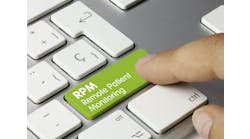Central Pennsylvania health system WellSpan Health has plans to grow hospital-level and post-acute care at home patient volume by 75 percent over the next three years. In a recent interview with Healthcare Innovation, Vipul Bhatia, M.D., WellSpan’s associate chief medical officer of post-acute and continuing care, spoke about these ambitious goals.
The eight-hospital system’s care-in-the-home ecosystem includes preventive care, acute care, post-acute care and end-of-life care. It has just launched a partnership with remote patient monitoring vendor Biofourmis to support the enterprise-wide expansion and management of its care-at-home program.
Bhatia described the continuum of home-based offerings. In the preventive care space, patients are recording their vital signs at home. That data is being looked at by clinicians who are informing patients what to do next. “The reason I say that is preventive care is because without that visibility of the clinician and active management by the clinician, these changes would go unnoticed, and if they go unnoticed these patients will come into the hospital,” he said. “So we are preventing unnecessary and avoidable visits and interactions with the emergency departments or urgent cares for these patients.”
The second item that sits in the preventive bucket is primary care. Patients who have traditionally sought primary care in the brick-and-mortar physician's office can now potentially get that care in the home. That can be for patients who are otherwise well, but they prefer to get primary care virtually through a video visit. But it also involves patients who are not well but they are homebound and there is no other way that they can get primary care except for a clinician coming to their home.
“We don't have a big primary care-at-home model yet, but it’s all done by WellSpan and not through a third party,” Bhatia said. “The only thing we are doing through a third party is using Biofourmis’ devices to monitor patients, but it's our clinicians who are monitoring the vitals.”
Primary care at home is a small pilot right now. "We don't have it fully scaled, but we have been doing remote patient monitoring since 2017 or 2018. So our partnership with Biofourmis is new, but our capability to do remote patient monitoring is not,” Bhatia said. “We have good experience doing remote patient monitoring in the hospital-at-home program.” WellSpan launched the program in 2020 during COVID but it had been planning it for a few years before that. Patients who would have typically been admitted to the hospital are treated in their homes. It's for low-acuity patients who don’t need to be in the ICU.
The program maximizes bed availability in their hospital facilities for patients with higher acuity conditions. and addresses emergency department overcrowding as well, Bhatia said. “More importantly, it's a very big patient satisfier. We regularly track our patient experience scores for that program, and also track our outcomes and compare those to national benchmarks and we continue to perform very, very well in those areas.”
All these programs have a WellSpan at Home clinical team of nurses, nurse practitioners and physicians, and they are able to provide care in different programs within that ecosystem.
The third category involves post-acute care, including traditional home health or VNA services. “Our own VNA has been operating in our communities for over 100 years now,” Bhatia said. “Compared to the other programs that I mentioned, this is a well-established program with very set reimbursement mechanisms. But we have aligned that existing program into this continuum.”
CMS recognizes VNA as a special carve-out level of care in the post-acute space. Skilled nursing facility is another carved-out post-acute level of care but SNF-at-home is probably five to 10 years behind hospital-at-home as a movement, Bhatia noted. “I think in the next five to six years we will see the same kind of impetus there as we see now for acute hospital at home. But we are not doing SNF at home right now.”
Remote patient monitoring is also used in the post-acute category. “A lot of times patients get started with RPM when they're leaving the hospital because it is used as a tactic to prevent readmissions,” he explained. “By having close monitoring of devices by the nurses who are managing the patients, you can like catch some complications early and then you can act early and that can prevent readmissions and ED visits.”
Bhatia spoke about the reasoning behind the ambitious growth goals for care at home. “We are actively maintaining a census of about 400 for remote patient monitoring right now. We know that there is a lot more potential and demand out there,” he said. “We have some calculations in terms of what our potential could be in that space. When we take into account all the programs in the ecosystem, if we combine all that, that's where our estimation or 75 percent growth comes from.”
With remote patient monitoring so central to these care-at-home models, Bhatia spoke about why they wanted to partner with Biofourmis. “We launched with Biofourmis this past month, because the company has the kind of technology that is ahead of some of the other offerings that are on the market. One specific example involves continuous monitoring. They have a patch that continuously sends a single-lead EKG, blood pressure and pulse-ox to the clinicians. And I believe that it's going to be very useful for our hospital at home for more patients to have that continuous monitoring.”
WellSpan executives were also interested in the connectivity with their electronic health record. “Biofourmis was able to work with us and have that interoperability with our EHR, and it's bidirectional,” Bhatia said. “The clinicians don't have to do double entry. And any data that is flowing from the devices to the Biofourmis platform is seamlessly flowing into Epic. That way, even if a physician or a nurse or a social worker is not part of the remote patient monitoring team, they can see everything that’s happening in the EHR.”


